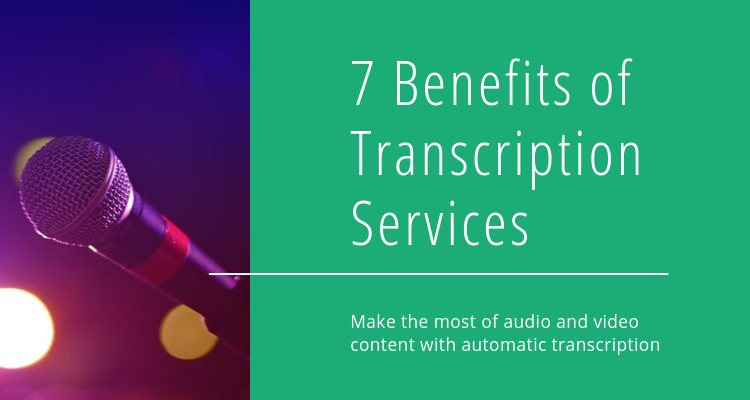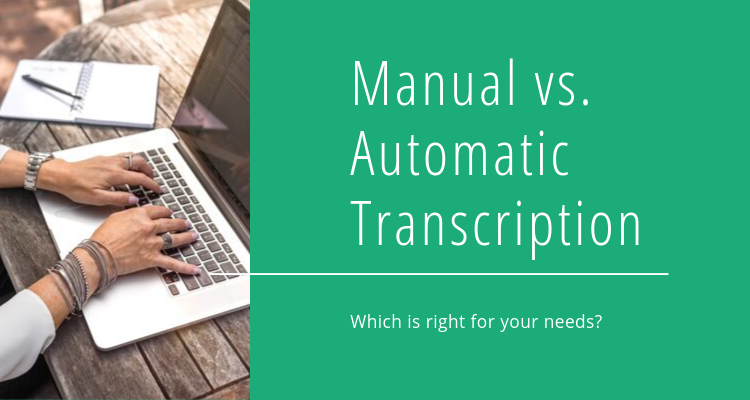
The concept of transcription has been around since ancient Egypt…although in those days transcription looked more like carving sketches into stone than the eloquent words on a screen we are so familiar with today.
Transcription services have come a very long way in their long history, and that history tells us quite a bit about their importance. But if the lengthy history of transcription services doesn’t prove their value enough, we’ve put together a list of the top seven benefits of transcription services:
- Search engine optimization (SEO)
- Accessibility and legal compliance
- Time savings
- Comprehension
- Translation
- Searchability
- Repurpose content
1. Search Engine Optimization (SEO)
Search engine optimization, or SEO, refers to building a website and its content so it will show up in Google and other search engines when specific phrases are searched.
Historically, Google has favored text content. Other forms of content, like images, audio, and video, haven’t performed as well. Rich media content is more difficult for search engines to crawl and understand, which likely contributes to this. As a result, rich media might not showing up in search results as well as text content.
This brings us to our first benefit of transcription services: they can provide text transcripts of audio and video content that can be easily indexed by search engines. The text can help audio and video content perform better in search results. It gives Google something to index that can help the page rank higher, ultimately driving more traffic to your website. For marketing videos, webinars, and podcasts, having a transcript on the page with your rich media can equate to 10x or more visits to your site every month.
To get the most SEO benefit from your transcripts, we recommend thoroughly reviewing your transcript and implementing SEO best practices. Here are a couple key things to include:
- Headings and subheadings with a target keyword (H1, h2, h3, etc.)
- Bold text with target keywords
- Bulleted lists
- Images named with keywords and use alt text
- Internal links and external links where applicable
2. Accessibility and legal compliance
While the many benefits of transcribing audio and video files can be compelling, there are legal reasons to do so as well. The Americans with Disabilities Act (ADA) is designed to make public places, including the internet, accessible to all regardless of disabilities. Audio and video files are not exempt.
According to the World Wide Web Consortium (W3C), video content is compliant with the ADA when, “Either an alternative for time-based media or an audio track is provided that presents equivalent information for prerecorded video-only content.”
Typically the best way to ensure your videos are compliant is to use closed captioning. Closed captions are transcripts of the audio that overlay the video to show who said what and when. Without this context, the video isn’t considered accessible.
Back to top
3. Time savings
Transcribing audio and video content can also help improve efficiency in some professions. Journalists, for example, often record interviews with their sources so they have a record of their research. Without transcription, journalists lack a good way to search the recorded audio and may waste time trying to find specific sound bites. Having a transcript in hand allows them to easily search for the key words, phrases, or quotes they are looking for.
Journalists aren’t the only profession that can benefit from transcription, though. Business and marketing professionals as well as copywriters may record meetings so they can refer back to a transcript without having to spend an entire meeting typing away on their keyboard.
Back to top
4. Comprehension
In academic settings, the ability to transcribe lectures, both in person and video recorded, offers significant advantages for students and faculty alike. If students know they’ll have a record of what was taught when they leave the lecture, they can focus better and participate more in class conversations than if they are frantically writing or typing every word they hear. Also, not everyone learns the same way. Simply hearing a lecture may work for some students, but be highly ineffective for others. Transcription of lectures can help resolve these issues and better cater to the needs of students.
Additionally, online courses in professional and other settings can use transcription to help to improve the SEO of course content as well as provide an alternative means of learning for students and help make courses accessible to those with disabilities.
Back to top
5. Translation
Transcription of audio and video content can also be a helpful first step toward translating the content into other languages. Translating written content is much easier than to translating audio content. By first transcribing the audio to text, a translation service can then be used to make the content available in another language.
Translation can often be done in conjunction with automatic transcription, creating access to a written version of the audio in multiple languages in a matter of minutes.
Back to top
6. Searchability
Unlike text content, audio and video content are not easily searchable. Transcribing audio and video content to text makes it simple to search the transcript to find specific words or phrases.
This is especially useful when the transcription service provides timestamps along with the transcript. The ability to search the transcript, find the timestamp you’re looking for, and playback the audio or video file at that time stamp has many benefits and applications, including podcasts, webinars, sermons, and lectures.
Back to top
7. Repurpose content
Another benefit of transcription services is the ability they create to repurpose content. Content is not optional when it comes to being effective and getting found online. As Google gets smarter and as the content abyss grows larger, it is taking more value and uniqueness to stand out. This requires a lot of resources and some creativity with content types. Video and audio content can perform well with users, but they don’t necessarily scratch the itch of search engines in the same way. That’s where transcription services can come into play.
Back to top
To wrap up, there are many benefits of transcription services. Transcription can turn amazing audio and video content into text that can be repurposed into website pages, ebooks, infographics and other formats to stretch marketing budgets and boost SEO.




0 Comments